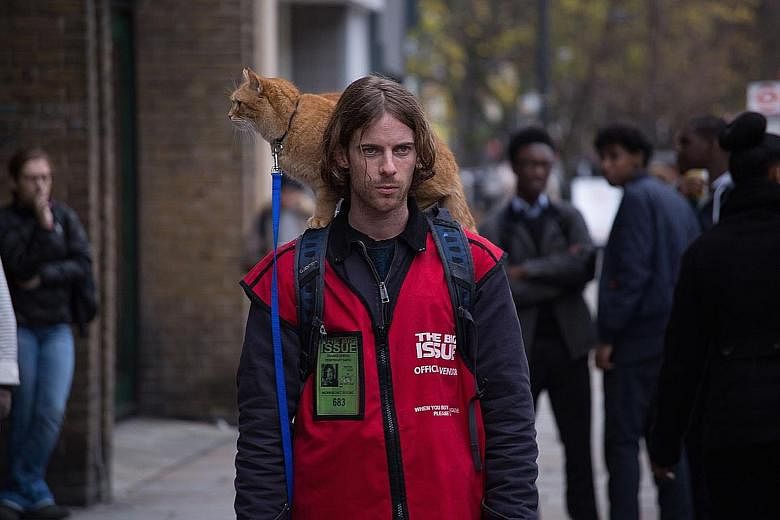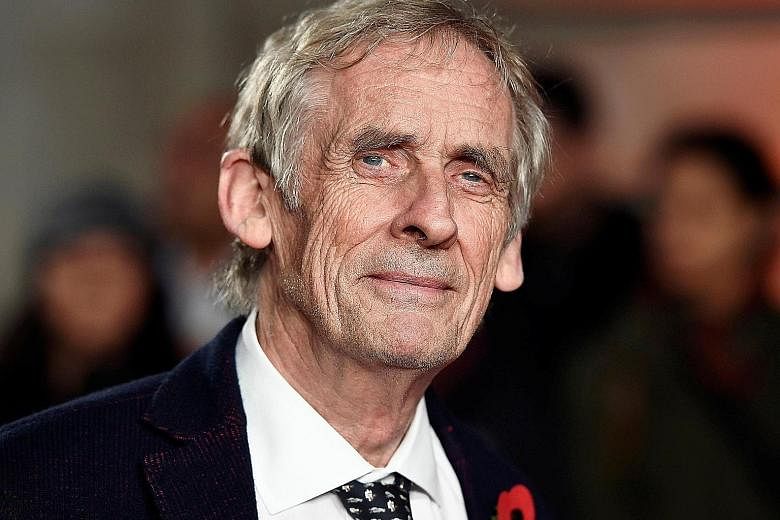Director Roger Spottiswoode has directed one animal movie you might have seen (the cop-and-dog comedy, Turner & Hooch, 1989) and another you might not have (the straight-to-cable polar bear cub heartwarmer, The Journey Home, 2014).
Bears and dogs are one thing; cats - famed for their untrainability - are another.
His new movie, A Street Cat Named Bob, is based on the best-selling 2012 biography of the same name, about James Bowen, a former homeless man and addict who turned his life around after adopting a ginger tom, or rather, after Bob the cat walked into his life and refused to leave.
Would Spottiswoode have preferred it if the story had been called A Street Dog Named Bob instead?
"Dogs are more demonstrative at times," he says.
"All animals have their complexities and so do we all," he tells The Straits Times on the telephone from his home in New York.
A Street Cat Named Bob opens in Singapore tomorrow.
The British-Canadian director, 71, who has helmed big-budget action movies such as Air America (1990) and the James Bond movie, Tomorrow Never Dies (1997), says the first rule with animal movies is that the entire crew must be involved.
There must be silence on set.
"There will be no phones or intercoms and no sounds from the lights or cameras and no clapper board. Work calmly, no hurrying," he says.
Second, the cats must be given time to bond with the actors.
While Bob and the other lookalike cats bonded with Luke Treadaway, who plays Bowen, the crew kept their distance and used sign language to communicate, explains Spottiswoode.
"James brought Bob on set and told us what he liked and didn't like. He didn't like to be picked up or walk or sit on the street, but he likes to sit on shoulders. If he didn't like something he will growl - once. After that, he will hit you," he says.
Instead of making a knockabout comedy like Turner & Hooch or a sentimental weepfest like Marley & Me (2008), Spottiswoode says he wanted to adopt a realistic and serious tone for the movie. Bowen's life had been marked by homelessness and drug addiction, problems which still affect many in London and around the world.
"The story has a sweet ending, but it's still a hard story. He was in a dark place. But he is an unusual man and Bob is an unusual cat. He is not a cuddly pet. He's a cat with a real opinion about things," says the director.
As the film shows, one such opinion is the disapproval of drug-taking.
Bowen had been homeless for a decade before he met Bob. As such people spiral downwards, they lose connections with friends and family.
From speaking to social workers, Spottiswoode found that reconnecting with others - whether human or animal - is a vital step in pulling people out of the downward cycle.
"In James' case, it was a cat. That need to look after the cat and the cat looking after him. Bob doesn't like drugs and he doesn't like being hungry - it made James see that he could and wanted to heal himself."
•A Street Cat Named Bob opens in Singapore tomorrow.



